FTD Respiratory pathogens 21 plus - Mikrogen
FTD Respiratory pathogens 21 plus - Mikrogen
FTD Respiratory pathogens 21 plus - Mikrogen
Create successful ePaper yourself
Turn your PDF publications into a flip-book with our unique Google optimized e-Paper software.
There are only two exceptional cases.<br />
<strong>FTD</strong> <strong>Respiratory</strong> <strong>pathogens</strong> <strong>21</strong> <strong>plus</strong> version 5/ March 2012 english<br />
<strong>FTD</strong> <strong>Respiratory</strong> <strong>pathogens</strong> <strong>21</strong> <strong>plus</strong><br />
The primers and probes for the detection of Rhino also detect EV, but not the<br />
other way around. If you get a positive signal for Rhino and EV the patient is EV<br />
positive. If you just detect Rhino the patient is Rhino positive.<br />
The primers and probes for the detection of HIB give also a positive signal for<br />
Haemophilus parahaemolyticus which is associated with paryngitis.<br />
The specificity was validated with different respiratory negative samples. These<br />
did not generate any positive signal with the primers and probes which are<br />
included in the <strong>FTD</strong> Resp <strong>21</strong> <strong>plus</strong>.<br />
For the specificity of the <strong>FTD</strong> Resp <strong>21</strong> <strong>plus</strong> assay we analyzed a range of positive<br />
material containing bacterial and viral <strong>pathogens</strong>. No other bacteria or viruses<br />
got detected by the six PPmixes only the mentioned exceptional cases.<br />
18.2 Sensitivity<br />
The analytical detection limit was tested by using a tenfold dilution series of<br />
plasmid DNA of known concentration (1E+09-1E+00 copies/ml) and the <strong>FTD</strong><br />
Resp <strong>21</strong> <strong>plus</strong> (table 8). In addition a 10 time measuring surrounding the plasmid<br />
detection limit was performed (table 9). Furthermore the detection limit was<br />
determined by using diluted positive patient material calculated with plasmid<br />
DNA of known concentration (1E+09-1E+06 copies/ml) and the <strong>FTD</strong> Resp <strong>21</strong><br />
<strong>plus</strong> (table 8).<br />
- 27 -



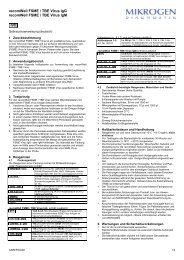

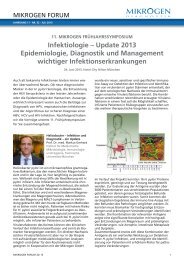

![recomLine EBV IgG [aviditet] [IgA] recomLine EBV IgM - Mikrogen](https://img.yumpu.com/19720026/1/184x260/recomline-ebv-igg-aviditet-iga-recomline-ebv-igm-mikrogen.jpg?quality=85)
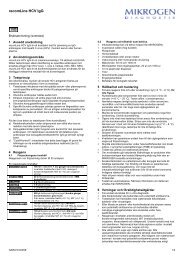
![recomBlot CMV IgG [Avidità] - Mikrogen](https://img.yumpu.com/16294013/1/184x260/recomblot-cmv-igg-avidita-mikrogen.jpg?quality=85)
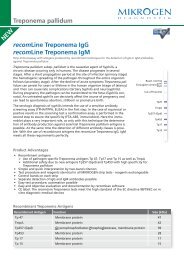
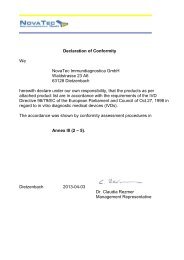
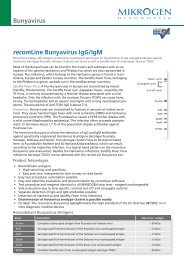
![recomBead Yersinia IgG recomBead Yersinia IgA [IgM] - Mikrogen](https://img.yumpu.com/15461030/1/184x260/recombead-yersinia-igg-recombead-yersinia-iga-igm-mikrogen.jpg?quality=85)
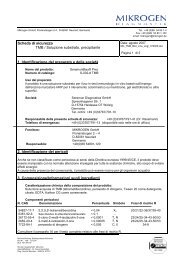
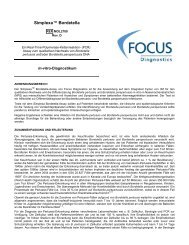
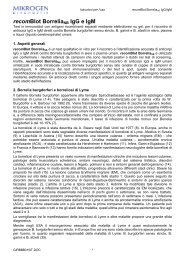
![recomLine EBV IgG [Avidity] [IgA] recomLine EBV IgM ... - Mikrogen](https://img.yumpu.com/6326010/1/184x260/recomline-ebv-igg-avidity-iga-recomline-ebv-igm-mikrogen.jpg?quality=85)